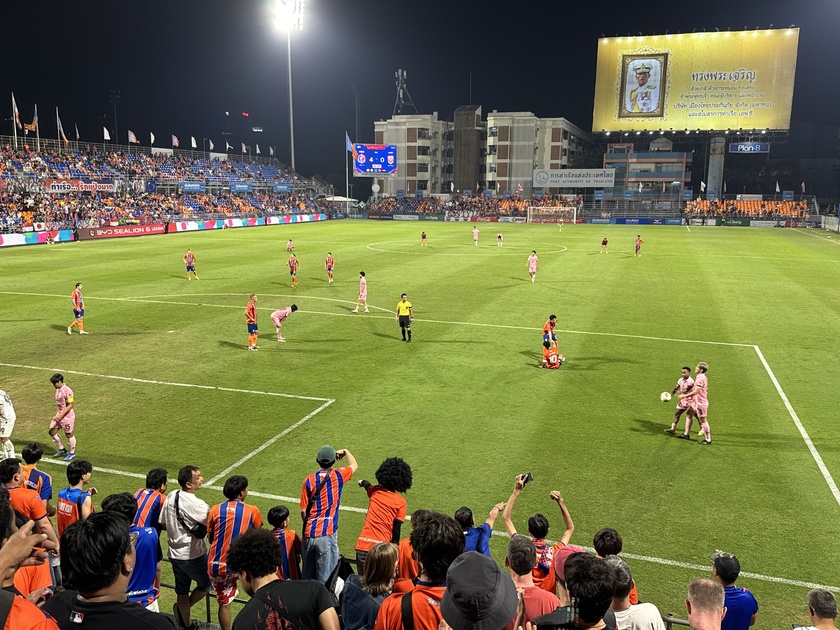Beitou (北投) is a district of Taipei City at the foot of Yangmingshan (陽明山 or Yangming Mountain), a collection of mountain peaks that make up Yangminshan National Park. These include Seven Star Mountain (七星山 or Qixingshan), a dormant volcano that last erupted around 700,000 years ago.
Xinbeitou (新北投), the hot spring village around Xinbeitou MRT station, occupies a lush valley that is home to 1200 species of plants, 110 species of bird, and 160 varieties of butterflies.
Beitou Thermal Valley (also called Beitou Geothermal Valley or Hell Valley) is a second, highly acidic “green sulfur” hot spring that is a major tourist attraction in Beitou and the source of the hot creek running through Beitou Hot Spring Park.
The spring water is high in radium, which in the past underwent a corrosive reaction with the andesite rocks on the river bed about 150 meters downstream, creating layers of cream and white diamond-shaped crystals named Hokutolite or “Beitou stone”, ...
Port FC vs Sukhothai FC match in the Thai League 1 (2025–26 season) January 10, 2026, at PAT Stadium in Bangkok.
Port FC delivered a dominant and professional performance, securing a convincing 5-0 victory over Sukhothai. The home side took complete control early, building a commanding 3-0 lead by halftime through clinical finishing and strong play. The second half was more controlled and low-key, as Port managed the game to protect their advantage while still adding flair. Two late penalties helped inflate the final scoreline, providing some extra gloss to an already decisive win.
This result gave valuable minutes to several squad players, including league debuts for some and a first league appearance of the season for key figure Bordin Phala. It was a solid, commanding display from the home team.
Port FC vs Sukhothai Thai League Football January 10th 2026 - Start of the Second Half of the Season
Port FC vs Sukhothai FC match in the Thai League 1 (2025–26 season) January 10, 2026, at PAT Stadium in Bangkok.
Port FC delivered a dominant and professional performance, securing a convincing 5-0 victory over Sukhothai. The home side took complete control early, building a commanding 3-0 lead by halftime through clinical finishing and strong play. The second half was more controlled and low-key, as Port managed the game to protect their advantage while still adding flair. Two late penalties helped inflate the final scoreline, providing some extra gloss to an already decisive win.
This result gave valuable minutes to several squad players, including league debuts for some and a first league appearance of the season for key figure Bordin Phala. It was a solid, commanding display from the home team.
Port FC vs Sukhothai Thai League Football January 10th 2026 - Start of the Second Half of the Season
January 10, 2026, marks National Children’s Day in Thailand (วันเด็กแห่งชาติ), and the Royal Thai Air Force (RTAF) is hosting one of the most popular and exciting events at Don Mueang (specifically at Squadron 601, Wing 6, opposite Don Mueang International Airport, along with the nearby Royal Thai Air Force Museum and Thung Si Kan small airfield).
This annual air show is a highlight for families, especially children, offering thrilling aerial displays, close-up views of aircraft, and various fun activities to inspire youth and showcase Thailand’s air defense capabilities. The event is free to attend and draws huge crowds—often over 100,000 people!
This is a free event and really a lot of fun for everyone, not just military enthusiasts.
F-16 Fighting Falcon: RTAF Air Show Children’s Day 2026 การแสดงบินวันเด็ก กองทัพอากาศ 2569 Bangkok










































